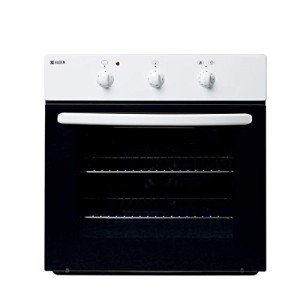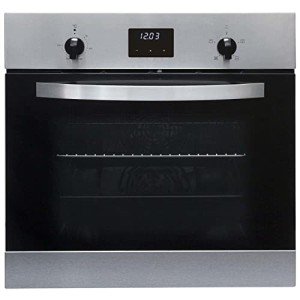The Little-Known Benefits Of Oven
페이지 정보

본문
 How to Repair Common Oven Parts
How to Repair Common Oven PartsThe oven and hob is an appliance used in kitchens that is used to cook food items. The heat generated by the oven sterilizes food items and kills the majority of micro-organisms in them.
All bakers require an accurate oven thermometer. Understanding how your oven works will improve your baking and roasting abilities and eliminate those irritated hot spots that wreak havoc with cookies, cakes and other baked items.
Thermostat
The thermostat is an important part of your oven. It assists in ensuring that the temperature of food is in line with the temperature you set on the control panel. It could be a problem, just like any other switch or sensor that is electro-mechanical. The oven may overheat or underheat, or not keep the temperature you set.
The oven thermostat is a small strip made of two different metals that are bonded together. When heated to a certain temperature, the two metals expand or bend at different rates. This creates an electrical circuit. When the metal in the thermostat is at the temperature you've set on your control panel it turns off the power to the heating element. As the oven cools the bimetallic strip expands in a way, reestablishing the circuit and activating the heating element. This cycle is constantly repeated to ensure a constant temperature in your oven.
To diagnose a problem with the thermostat, you'll have to remove the oven and verify that all of the screws holding it in place have been removed. If you have a multimeter (which is a device that analyzes the electrical current), Meal prep set it to the ohms level and then test the thermostat. If the multimeter shows zero or close to zero, the thermostat is functioning correctly and doesn't require to be replaced.
If the multimeter fails to read anything then the thermostat is not working properly. It needs to be replaced. Cooker Spare Parts suggests that you replace your thermostat with a similar model as the one you have. They are available on the internet or in a kitchen goods store, and can be bought at a reasonable cost.
Bake Element
The bake element is crucial for the proper operation of your oven. It generates heat that lets it cook food. It's a simple component that turns electricity into the high temperatures needed for baking, roasting and broiling. Heating elements are typically found in electric ranges and best ovens uk and are either uncovered or hidden under the oven's floor.
The majority of oven heating elements are made of high-resistance materials such as nickel-chromium alloy. They work by converting electrical energy into heat by the process of resistance, which radiates outwards into the oven's interior to raise the temperature to the desired temperature to cook various types of foods.
When you turn on the oven the heating elements start to produce heat through the high-voltage electric current flowing across the surface of the metal. The element is a coil or ribbon (straight or Best Ovens and hobs uk corrugated) of wire, and when the electric current flows through it, it starts to heat up. The element will glow red hot when it is at the desired temperature.
The baked element is the primary source of heat for most oven functions. It's typically located at the bottom of the oven and is also used to clean the oven in many automatic oven models. If it starts to burn out, you might notice that your oven doesn't warm as quickly or your food isn't cooked through completely.
Plug your multimeter in to its red and black ports. Then, press the probes made of metal on one end of the element against each other. The other end of the element against one terminal and place your hand on it. If the element feels warm, take it off it and test it again. If it's not, remove the element and test again.
Broil Element
The broil element, which is typically located at the top of your cavity, offers high heat to cook or char foods. The oven's broil setting can be an excellent way to quickly cook meat or crisp vegetables, to heat up lasagna or caramelize the top of the casserole.
Similar to the bake element the broiler heating element converts electrical energy into heat through the process of resistance. It consists of an inner core of wires made of metal wrapped in an insulating expanded perlite material. The inner core is encased in an outer layer of stainless steel, which protects the wires from direct contact with the oven. The three-layer structure helps reduce the temperature of the broil element, making it more durable and safer than older types of elements.
While you may use any baking or broiling heating element in your oven, it is important to select one that is compatible with the wattage rating of your oven. A different wattage could harm your oven or cause it to overheat. You can verify the wattage of your oven and the rating of the new heating element by examining their current and voltage ratings on the control panel of your oven.
Examine the resistance of the old element, then compare it to the wattage rating of the new element. The higher the resistance of an oven element the more power it draws.
If your broiler heating element is acting up or doesn't work at all, you should replace it immediately. It is crucial for your oven to function properly so that you can cook your most loved foods. If, however, your oven is not working at all, or is only working intermittently, the issue could lie with another part of your oven.
Light Bulb and Assembly
The oven light lets you keep an eye on the food cooking without having to open the door and let the heat escape. The light will also let you know when the casserole is finished. It's not uncommon for the bulb to die. This can be very frustrating but it's an easy fix you can do yourself. Make sure the breaker is not tripped and that the connector has three prongs.
Remove the old bulb and then look for the new bulb. You may have to search online for the right replacement bulb that is compatible with the wattage of your oven. Some ovens utilize standard appliance bulbs that run at 40 watts, while others need lamps that are halogen up to 50 watts. Be aware that the oil from your hands could damage the bulb, so consider using cotton gloves when handling it.
Before putting the new bulb in place it is important to first remove it from its glass casing. Do slowly to avoid breaking it. After that, you'll need to remove the air from the bulb and fill it up with a mixture of gases. This will extend the lifespan of the filament.
If your light bulb is always being replaced, it could be a bigger electrical issue that should be addressed by an expert. Make sure that you're using a correct bulb for your oven, and consult your Use and Care Guide for more troubleshooting tips. Remember to unplug the oven and shut off the power prior to beginning any repairs. This will keep you from suffering an electric shock.
 Vent Tube
Vent TubeThe vent tube is an essential oven component that permits a small airflow inside the cavity. This allows the bake-element to circulate heat throughout the oven, ensuring that the temperature is evenly distributed.
It also allows vapors from the oven to escape, and also allows smoke to be removed from the cooking surface. It is crucial for the proper operation of any gas or electric oven.
Oven vent tubes may become clogged by a variety of factors. Accidental spills and splatters during cooking can leave sticky residues on the oven vents, which can attract dust and other particles that can eventually cause blockages or clogs over time. Grease and oil particles may become airborne and settle on the vents, and oven With hob vice versa. Other environmental factors, such as kitchen construction and renovations, can introduce dust or other contaminants into the vents, resulting in clogs or blockages.
Depending on the model of the oven the vent tube may comprise a spreader 46 and a fill tip 12, and an a bottle guide 20 that are integrated into the pipe 32. For example, the bottle guide 20 could have a tapered exterior surface that is complemented by the tapered inside of the spreader 46. This allows the vent tube to be smoothly fitted into various sizes and shapes of bottle necks.
A blocked vent tube may cause a loss in pressure within the enclosure, which could cause a downdraft that pulls exhaust backwards and then down the vent, damaging the oven's components. Consult a professional if think your vent pipe could be blocked or clogged. They will diagnose the problem and provide recommendations for removing or cleaning the vent.
- 이전글Guide To Situs 4d: The Intermediate Guide Towards Situs 4d 24.11.22
- 다음글웹툰사이트 ※여기여※ 주소찾기 주소모음 주소모음 24.11.22
댓글목록
등록된 댓글이 없습니다.














